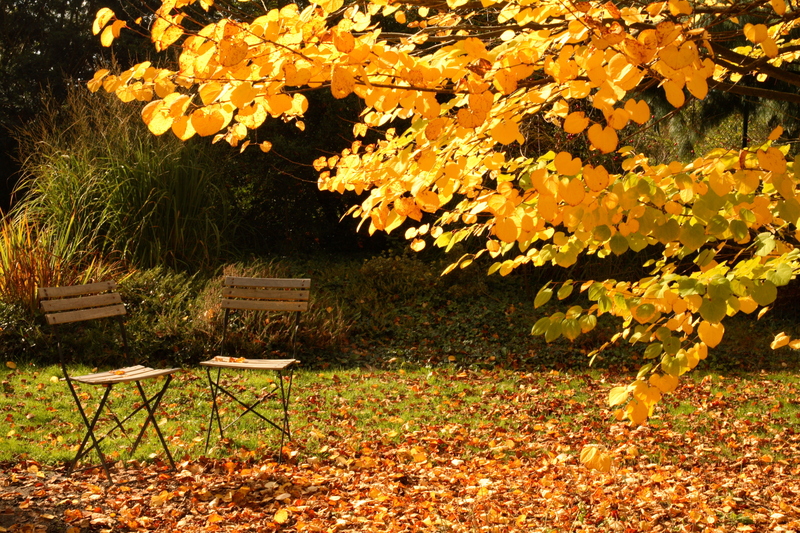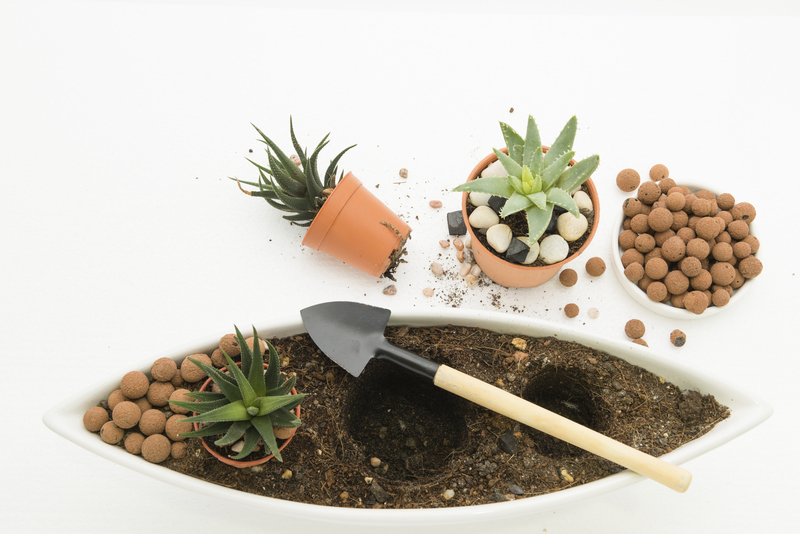Strategically Designing Pet-Friendly Plant Zones
Posted on 08/06/2025
Strategically Designing Pet-Friendly Plant Zones: A Comprehensive Guide
Designing a beautiful, thriving indoor or outdoor garden space presents unique challenges and opportunities for pet owners. Creating pet-friendly plant zones allows you to enjoy lush greenery while ensuring the health and safety of your beloved animals. In this comprehensive article, we'll cover how to strategically design plant zones that are both gorgeous and safe for furry friends, offering best practices, plant recommendations, layout ideas, and tips for maintaining harmony between pets and plants.

Why Strategically Design Pet-Friendly Plant Zones?
Many popular houseplants and landscaping favorites are surprisingly toxic to common pets like cats and dogs. Accidental ingestion, skin contact, or digging can lead to mild irritations or even life-threatening emergencies. Beyond safety, the well-being of your animals and plants hinges on thoughtful planning--otherwise, you may find your hard work chewed up, dug out, or ruined!
Strategic pet-safe garden design allows you to:
- Prevent accidental poisoning by selecting non-toxic plants and managing exposure zones.
- Protect your garden from being destroyed by enthusiastic pets.
- Encourage healthy enrichment for your pets, providing zones for play and rest.
- Promote harmony so both plants and pets thrive in the same space.
Key Principles of Designing Pet-Safe Plant Areas
- Safety First: Know which plants are safe and toxic, and plan the use of barriers or high shelves if needed.
- Functional Zoning: Define spaces for your pets and your plants--each gets dedicated zones that minimize conflict.
- Behavioral Enrichment: Use plant zones not only as decoration but also as stimulation and healthy distraction for pets.
- Maintenance Simplicity: Opt for hardy, low-maintenance species and layouts that withstand pet activity.
Choosing Pet-Friendly Plants: Safe Choices for Dogs and Cats
Before you begin designing your pet-friendly plant zones, research which plants are non-toxic. Reputable sources include the ASPCA and local veterinary resources. To help you get started, here's a quick list of popular, non-toxic plants suitable for various strategic zones.
Indoor Pet-Safe Plant Ideas
- Spider Plant (Chlorophytum comosum): Hardy, tolerant of low light, and non-toxic to dogs and cats.
- Bamboo Palm (Chamaedorea elegans): Cleans indoor air and is safe for pets.
- Boston Fern (Nephrolepis exaltata): Lush and elegant, thrives in indirect sunlight, and poses no threat to animals.
- Calathea (Calathea spp.): Vibrant foliage; non-toxic and perfect for style-focused plant zones.
- Areca Palm (Dypsis lutescens): Provides a lush, tropical look without risking your pet's health.
Outdoor Pet-Friendly Plant Choices
- Herbs: Basil, Rosemary, Thyme, Sage are all safe for pets and add culinary value.
- Marigolds (Tagetes): Brightly colored and safe for most pets.
- Sunflowers (Helianthus): Imposing and fun for children and pets alike.
- Snapdragons (Antirrhinum majus): Colorful annuals that are non-toxic.
- Roses (Rosa spp.): Most species are safe, but be mindful of thorns.
Avoiding Common Toxic Plants: What to Exclude from Pet Zones
While it's tempting to fill your zones with trending greenery, many attractive plants are dangerous to pets. Always exclude these from accessible areas:
- Lilies: Extremely toxic to cats--even brushing against pollen can harm them.
- Philodendron and Pothos: Both contain insoluble oxalates dangerous to dogs and cats.
- Sago Palm: All parts are highly toxic, especially the seeds.
- Aloe Vera: Beneficial to humans, but not to cats or dogs.
- Dieffenbachia (Dumb Cane): Contains compounds that can cause severe irritation and swelling.
Tip: When in doubt, consult with your veterinarian before introducing any new plant to your home or yard.
Strategic Layouts: Design Ideas for Pet-Friendly Plant Zones
Zoning for Separation and Synergy
The heart of strategically creating pet-safe plant zones is the purposeful division of space that encourages pet exploration without endangering plants or animals. Here's how:
- Vertical Gardening: Use hanging baskets, elevated planters, and wall-mounted shelves to keep trailing and delicate plants out of reach.
- Border Barriers: Small fences, stones, or chicken wire can delineate off-limits flower beds or garden areas.
- Pet Paths: Encourage your pets to roam away from plant beds by installing clear paths or soft ground covers (e.g. clover, moss, or mulch).
- Interactive Corners: Dedicate portions of the garden to pet enrichment zones--sandpits for digging, scent gardens safe for sniffing.
Indoor Pet-Friendly Green Zones
Use multi-level surfaces to keep lush foliage up high, such as:
- Shelf Gardens: Wall-mounted or free-standing shelving systems for pot displays.
- Hanging Planters: Macrame or ceiling hooks for trailing plants like spider plant or baby's tears.
- Closed Terrariums: For high-humidity, pet-inaccessible microclimates.
- Room Dividers: Tall planters or green screens that double as dog gates.
Outdoor Pet-Friendly Landscaping Ideas
- Safe Lawns: Hardy pet-friendly grasses (like tall fescue) are resilient to digging and urine.
- Dig Zones: Designated spots filled with sand or mulch to satisfy digging instincts.
- Shade Gardens: Group safe leafy perennials under trees for cool nap spots.
- Herb Borders: Use aromatic, non-toxic herbs as beautiful edging and pet repellents naturally.
Behavioral Considerations: Designing With Pets in Mind
Remember, every pet is different. Cats may be climbers and nibblers; dogs could be diggers or nappers. Observe your animals' habits to shape your garden or home layout, minimizing points of conflict:
- For chewers: Choose tough-leaved, bitter-tasting plants and reinforce pots or beds.
- For diggers: Avoid freshly turned soil in plant zones--provide a "legal" dig area nearby.
- For climbers: Keep poisons elevated or use glass terrariums for tempting species.
- For energetic pets: Offer roomy pathways, agility features, and enrichment zones to burn off energy far from delicate greenery.
Multi-Species Households
If you have both cats and dogs, or birds and bunnies, choose plants and layouts that are safe for the broadest range of pets. Sometimes, rotating plants is necessary if a particular animal shows persistent interest or risk.
Maintenance and Long-Term Care: Keeping Pet Zones Beautiful and Safe
Even in a thoughtfully designed, pet-friendly plant zone, regular maintenance is essential for both plant health and animal safety.
- Check Plants Regularly: Inspect for nibbled leaves, uprooted roots, or signs of distress. Replace damaged or dying plants quickly--curiosity can peak with wilting greenery.
- Use Pet-Safe Pest Controls: NEVER use chemical pesticides or fertilizers accessible to pets. Opt for organic or pet-specific products instead.
- Train Pets: Use positive reinforcement (treats, praise) to encourage respecting plant areas. Redirect unwanted behaviors gently and persistently.
- Refresh Enrichment Zones: Keep sandboxes, digging pits, and scent gardens dynamic and interesting. Rotate toys, offer new herbs, or hide treats to promote engagement.
- Seasonal Adjustments: Some plants move indoors for the winter; others may be cut back or covered when pets spend more (or less) time outside. Reevaluate plant safety and placement with each season.
Cost, Sustainability, and Aesthetic Balance
A well-designed pet-safe plant zone doesn't require breaking the bank. Use hardy perennial natives whenever possible--these stand up to curious animals and need less water or fertilizer. Repurpose materials for barriers, planters, or green screens; old crates, pallets, or baskets can be beautiful and cost-effective. Balance sustainability, function, and beauty for a truly harmonious result.
Bonus: Pet-Friendly Edible Zones
Make your pet-friendly garden zones even more rewarding with a few edible additions:
- Catnip & Cat Grass: Dedicated pots for these favorites can distract cats from more precious foliage.
- Dog-Safe Veggies: Carrots, green beans, and cucumbers can be grown for treats.
- Herbs for Birds: Parrots and small mammals often enjoy fresh parsley, basil, and mint! Always consult an avian vet before offering new foods to birds.
Common Mistakes to Avoid in Designing Pet Zones
- Overlooking Research: Not every gorgeous plant is safe! Double-check each species for all your pet types.
- Ignoring Habits: A beautiful layout won't last if pets have easy access to tempting, destructive play.
- Using Unsafe Products: Fertilizers, pesticides, or soil amendments can endanger pets even if the plants are non-toxic.
- Skipping Training: Design and training must go hand-in-hand for a peaceful, beautiful co-existence.
- Crowding Spaces: Animals need ample space to move and play without bumping into delicate plants.

Expert Tips for a Thriving Pet-Friendly Plant Zone
- Rotate plants regularly to keep pets interested in their own enrichment zones--not your prize ferns.
- Add texture variety: Mix coarse-leaved, fuzzy, and glossy plants to provide both visual and tactile interest.
- Anchor pots and planters to prevent tipping by playful pets--use gravel, sand, or secured trays.
- Opt for self-watering planters where possible--reducing maintenance mess and keeping pets out of watering cans.
- Include vertical elements: Perches for cats or mesh walls for climbers can discourage them from exploring risky zones.
Final Thoughts: The Joy of Harmonious Green & Pet Spaces
Designing strategically pet-friendly plant zones is about more than avoiding toxic species--it's an intentional blending of nature, safety, and animal enrichment. With thorough research, clever planning, and regular maintenance, your home or garden can become a lush retreat where both pets and plants flourish together.
With the ideas and guidelines shared above, you can confidently create pet-safe plant environments that are visually stunning, environmentally sound, and, most importantly, safe for every member of your multi-species family.
Resources & References
Plan, protect, and plant smart--the happiness of your pets and the beauty of your garden are worth it!

